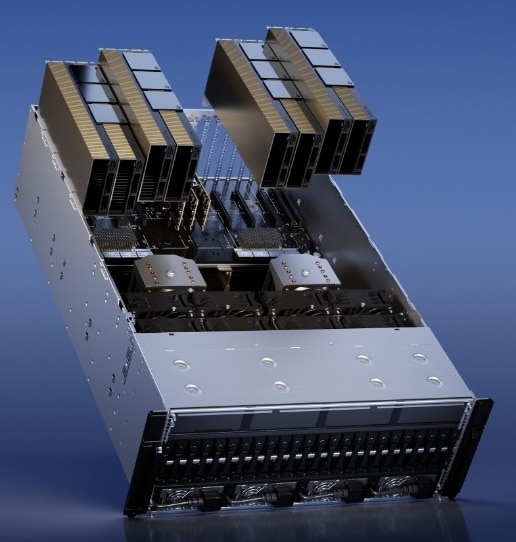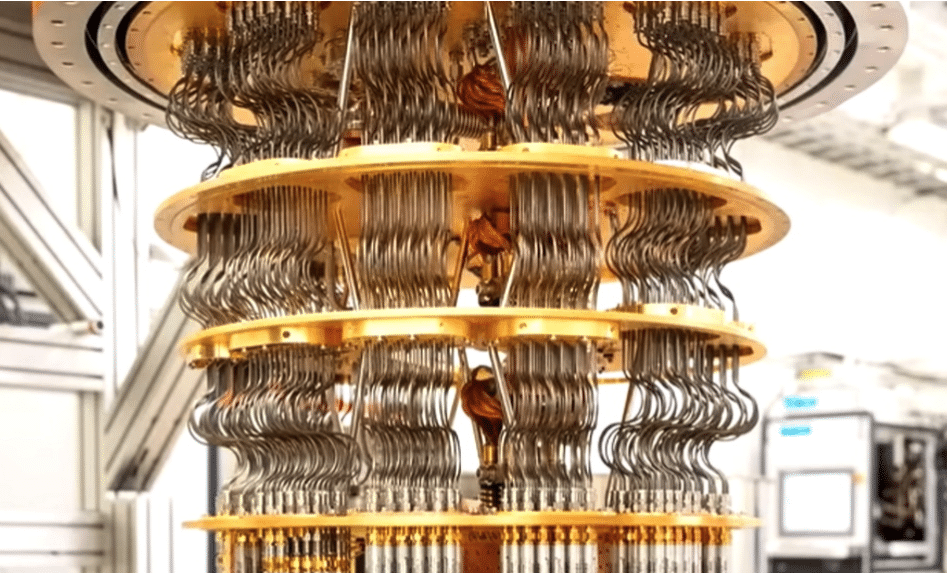Michael Kuehn and Davide Vodola at BASF are pioneering quantum computing in the chemical industry, pushing the boundaries of what’s possible in scientific simulation. They’re demonstrating the power of quantum algorithms to reveal attributes of NTA, a compound used in removing toxic metals from wastewater, which traditional simulations can’t detect.
Their team at BASF has achieved a significant milestone by simulating 24 qubits, the core processing units of a quantum computer, using GPUs. Not stopping there, they recently conducted their first 60 qubit simulations on NVIDIA’s Eos H100 Supercomputer, marking it as their most extensive molecule simulation using a quantum algorithm. The work requires a lot of heavy lifting, so BASF turned to an NVIDIA DGX Cloud service that uses NVIDIA H100 Tensor Core GPUs.

BASF’s quantum computing initiative, launched in 2017 by Kuehn, isn’t limited to chemistry. They’re exploring quantum computing applications in machine learning and optimizing logistics and scheduling. This initiative is powered by NVIDIA CUDA Quantum, a versatile and user-friendly platform for programming CPUs, GPUs, and quantum processors (QPUs). Vodola praises CUDA Quantum for its simplicity and flexibility, which makes complex quantum circuit simulations possible.
To handle the demanding computational needs, BASF is utilizing, which employs NVIDIA H100 Tensor Core GPUs. Kuehn notes the significant speed advantage of this NVIDIA platform over CPU-based hardware for such simulations.
Enabling Impossible Quantum Simulations
CUDA Quantum is gaining traction beyond BASF. Researchers at SUNY Stony Brook use it for high-energy physics simulations, exploring subatomic particle interactions. Dmitri Kharzeev from SUNY and Brookhaven National Lab highlights CUDA Quantum’s role in enabling otherwise impossible quantum simulations. Similarly, a team at Hewlett Packard Labs is leveraging the Perlmutter supercomputer for quantum chemistry simulations, exploring magnetic phase transitions in one of the largest simulations of its kind.

The global CUDA Quantum community is expanding. Classiq, an Israeli startup, announced a new Tel Aviv Sourasky Medical Center research center to train life science experts in quantum application development. This could lead to advancements in disease diagnosis and drug discovery. Classiq’s quantum design software simplifies low-level tasks and is being integrated with CUDA Quantum.
Terra Quantum and IQM are developing hybrid quantum applications for various sectors, planning to run them on CUDA Quantum. Several companies, including Oxford Quantum Circuits, use NVIDIA Grace Hopper Superchips for their hybrid quantum efforts. Quantum Machines announced that the Israeli National Quantum Center will be the first to deploy NVIDIA DGX Quantum, a system using Grace Hopper Superchips, to power quantum computers from various manufacturers.
Quantum Cloud Services
Grace Hopper Superchips are also being utilized by qBraid and Fermioniq for quantum cloud services and tensor-network algorithm development, respectively. The shared memory and bandwidth of Grace Hopper make these superchips ideal for quantum simulations.
NVIDIA invites developers to start programming hybrid quantum systems with the latest release of CUDA Quantum, available on NGC, NVIDIA’s catalog of accelerated software, or GitHub. This initiative marks a significant step in the fusion of quantum computing and traditional high-performance computing, paving the way for groundbreaking advancements in various scientific fields.




 Amazon
Amazon